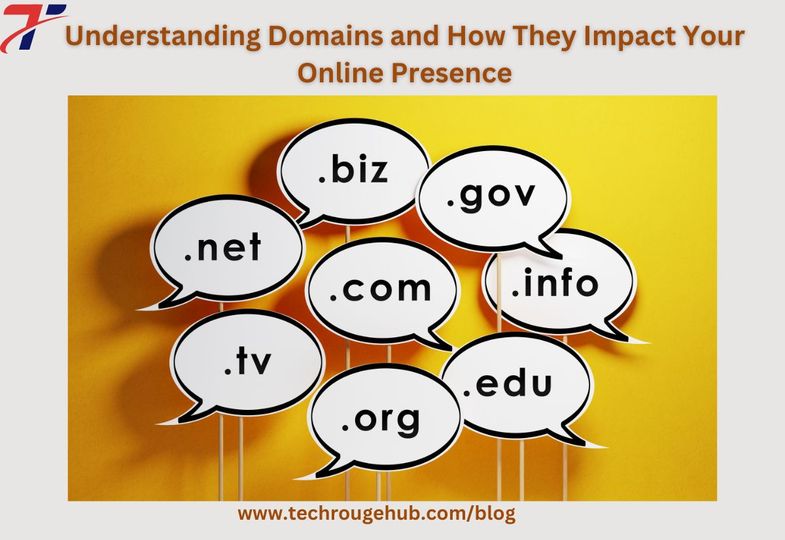When establishing an online presence for your business, securing a domain name is one of the first critical steps. A domain name is more than just an address for your website; it’s a vital part of how your business is discovered by potential customers on search engines like Google. In this blog, we’ll cover the essentials of what a domain is, how it differs from a URL, and why it’s crucial for your business.
What is a Domain?
A domain is essentially the address that people use to find your website on the internet. It is a memorable string of text that corresponds to the numerical IP address of your website, making it easier for users to access your site. Every website has an IP (Internet Protocol) address, which is a unique series of numbers. However, remembering numbers is challenging for most people, so domains exist to translate these numbers into something more user-friendly.
Think of your domain as similar to your home address. Just as your friends don’t need to remember your house’s GPS coordinates, they don’t need to remember your website’s IP address. Instead, they type your domain name into their browser, and the internet connects them to your website.
For example, in the web address “google.com,” “google” is the domain name, and “142.250.184.196” is the corresponding IP address. The domain name allows users to easily find and access the website.
Domain Name vs. URL
While a domain name is an essential part of your website’s address, it’s not the entire address. The full web address is called a URL (Uniform Resource Locator). If your domain name is like your house address, the URL includes all the details, such as the street name, city, and postal code. A URL typically consists of the protocol (like “https://”), the domain name, and additional path information that directs users to specific pages on your site.
What Does a Domain Look Like?
Domains are typically made up of two or three parts separated by dots. For example, in “blog.techrougehub.com,” “blog” is a subdomain, “techrougehub” is the second-level domain, and “.com” is the top-level domain (TLD). The URL might include additional elements like a subdirectory or a specific page path, but the domain name is the core address that directs users to your site.
Internet Domain vs. Network Domain
In this blog, we focus on internet domains—those readable names like “hubspot.com” or “google.com” that identify websites. However, it’s worth noting that there are also network domains, which describe groups of connected devices within a private network. These are managed by administrators and allow users within the network to communicate and share resources.
Who Manages Domain Names?
Domain names are managed by various organizations. At the top level are bodies like the Internet Assigned Numbers Authority (IANA) and the Internet Corporation for Assigned Names and Numbers (ICANN), which oversee policies and accreditation for domain name registries. However, the companies most users interact with are domain name registrars, like GoDaddy or Google Domains, which allow you to register and manage your domain for a fee.
Why Are Domains Important?
Domains do more than just direct users to your website. Here are a few key reasons why domains are essential:
Ownership: Securing a domain gives you exclusive control over that address on the internet. No one else can use it as long as you have it registered, which is especially important if the domain is closely tied to your brand or business name.
Brand Identity: A domain that matches your business name helps establish a consistent and recognizable online brand. It reinforces your brand identity as users navigate through different sections of your site.
Credibility: A custom domain name makes your website look more professional and trustworthy. This is crucial for building credibility with your audience, especially when asking them to take actions like filling out forms or making purchases.
Memorability: A short, catchy domain name is easier for users to remember, which can lead to more direct traffic to your site.
Competitive Edge: A simple and memorable domain can help you stand out from competitors with less intuitive or harder-to-remember domain names.
Authority: The longer your domain has been in use, the more authority it can gain in search engine rankings. This is because older domains typically have more content, internal links, and backlinks, contributing to better SEO performance.
Types of Domains
Domains come in various forms:
- Generic Top-Level Domains (gTLD): These include popular extensions like “.com,” “.net,” and “.org.”
- Country Code Top-Level Domains (ccTLD): These are associated with specific countries, such as “.uk” for the United Kingdom or “.de” for Germany.
- Internationalized Country Code Top-Level Domains (IDN ccTLD): These allow domain names to be displayed in non-Latin characters, such as Chinese or Arabic.
- Subdomains: These are additional parts of your domain that help organize your website. For example, in “blog.hubspot.com,” “blog” is a subdomain that separates the blog section from the main site.
Setting Up Your Domain
If you’re ready to establish your online presence, the first step is to purchase and register a domain name. You can do this through a domain registrar, where you’ll check the availability of your desired domain and complete the registration process. Once registered, you can associate your domain with your website’s hosting provider, making your site accessible on the web.
Conclusion
Choosing the right domain name is a critical decision in building your online presence. It’s not just about availability; it’s about finding a name that reflects your brand, is easy to remember, and helps you stand out from the competition. Whether you’re a new business or looking to rebrand, securing a strong domain name is a key step toward online success.

